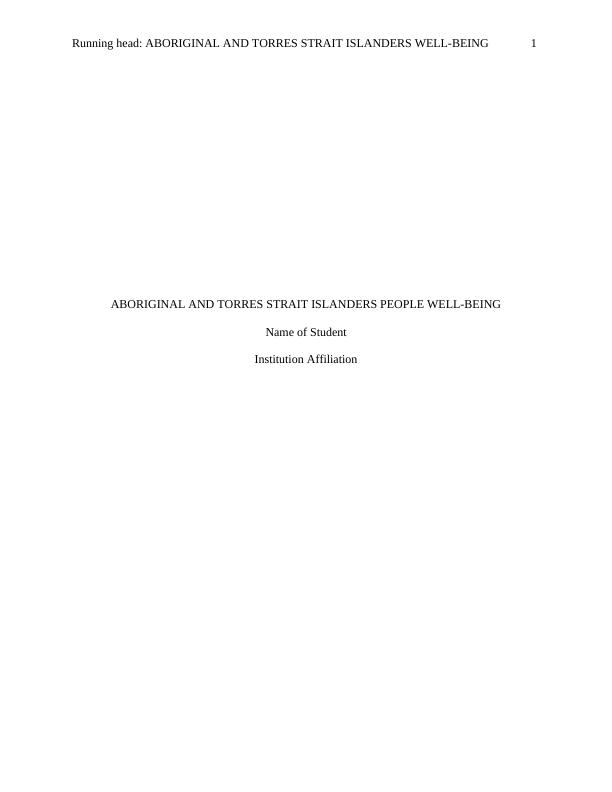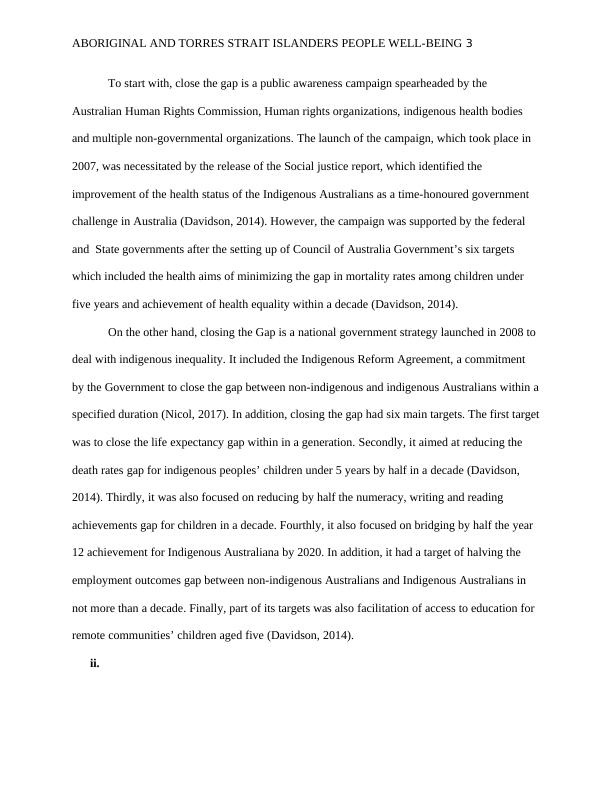Aboriginal and Torres Strait Islanders People Well-Being
Added on 2022-11-24
9 Pages2209 Words291 Views
End of preview
Want to access all the pages? Upload your documents or become a member.
Aboriginal and Torres Strait Islander Peoples Well-Being: Analysis of Close the Gap Campaign and AHRC Report
|9
|2130
|267
Closing the Gap: Addressing Health Inequalities among Aboriginals and Torres Strait Islanders
|9
|2389
|68
Closing the Gap: Challenges and Remedies for Culturally Safe Care
|9
|2634
|192
Aboriginal and Torres Strait Islander Peoples Well-Being: Analysis of Healthcare Inequalities and Initiatives
|10
|2500
|221
Close the Gap Strategy and Government's Role in Bridging the Gap by 2030
|9
|2169
|96
Indigenous Population Health Care in Australia
|7
|2127
|87


